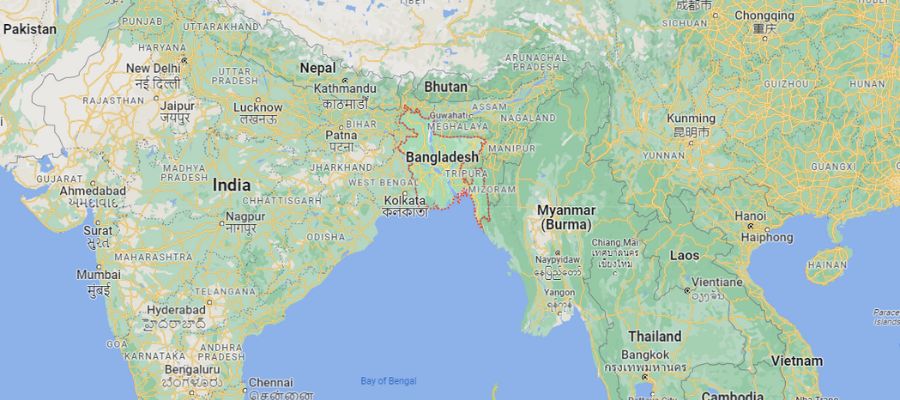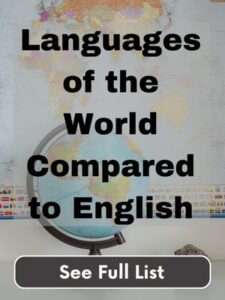With its rich history, distinct writing system, and global presence, the Bengali language holds a special place in the linguistic landscape. Bengali belongs to the Indo-Aryan language family, which is a branch of the larger Indo-European language family. Within the Indo-Aryan family, Bengali is classified as an Eastern Indo-Aryan language, sharing linguistic ties with languages like Assamese, Odia, and Maithili. This is why we have to consider Bengali speech and language development when working with young Bengali speakers in our schools.
Bengali, also known as Bangla, boasts a staggering number of speakers (300 million) making it one of the most widely spoken languages globally. The majority of these speakers reside in Bangladesh and the Indian state of West Bengal. However, the Bangladeshi diaspora led to Bengali speakers moving abroad, primarily seeking better economic conditions. That’s why in the United States, cities like New York and New Jersey are home to significant Bengali-speaking communities. Migration and family reunification have also played a key role in bringing Bengali speakers to America, as well as the pursuit of education.

Interesting Facts About Bengali Speech and Language Development
Did you know that we got the words “bungalow” and “dinghy” from Bengali? Bungalow is small house From ‘bangal’, the same root as ‘Bangladesh’. And dinghy of course means little boat.
Bengali employs its unique script, known as Bengali script or Bangla lipi, which is an abugida – a writing system in which characters represent consonant-vowel sequences. The script is cursive in nature, with a flowing and graceful appearance. It features a variety of diacritics to indicate vowel sounds, resulting in an elegant and intricate written form that complements the language’s cultural and artistic expressions.
Nobel Laureate Connection: Rabindranath Tagore, a Bengali polymath, poet, and composer, was the first Asian to be awarded the Nobel Prize in Literature in 1913. His contributions to Bengali literature and cultural enrichment are immeasurable.
Language Movement: The Bengali Language Movement in 1952 played a pivotal role in asserting the linguistic identity of the Bengali-speaking population in what was then East Pakistan, ultimately leading to the establishment of Bangladesh.
Bengali Speech and Language Development
Bengali Consonants in Comparison to English
| Bengali Consonants Not Shared with English | /ʈ/ /ɖ/ /ɸ/ /β/ /ɦ/ /r/ /ɽ/ |
| Consonants Shared With English | /m/ /n/ /ŋ/ /p/ /t/ /k/ /tʃ/ /b/ /d/ /g/ /dʒ/ /s/ /ʃ/ /h/ /z/ /w//l/ /j/ |
| English Consonants Not Shared with Bengali | /ʒ/ /θ/ /ð/ /f/ /v/ /ɹ/ |
Bengali Vowels in Comparison to English
| Bengali Vowels Not Shared with English | /ĩ/ /ũ/ /ẽ/ /õ/ /æ̃/ /ɔ̃//ã/ |
| Vowels Shared With English | /i/ /u/ /e/ /o/ /ɛ/ /ʌ//ɔ/ /æ/ /a/ |
| English Vowels Not Shared with Bengali | /ɪ/ /ə/ /ʊ/ /ɑ/ |
The Use of Phonotactic Constraints in Bengali Speakers
There are several specific speech patterns that are common form Bengali speakers who are speaking English.
- Native Bengali words don’t contain word-initial consonant clusters. Many native speakers restrict their phonology to CVC syllable structure.
- Word-final consonant clusters are rare in Bengali.
- Voiceless stops may be aspirated
- Voiced stops may be breathy
- Vowels may be nasalized
Language Specific Differences Between English and Bengali
Bengali and English exhibit several differences due to their distinct linguistic origins. Notably, Bengali is a subject-object-verb (SOV) language, whereas English follows a subject-verb-object (SVO) structure. This structural variation impacts sentence formation and word order. Additionally, grammatical features such as gender and verb conjugation differ between the two languages.
| Feature | Bengali | English |
|---|---|---|
| Sentence Word Order | Subject-Object- Verb order | Strict Subject-Verb Object order |
| Adjectives/Noun modifiers | Primarily Adjective-Noun order Determiners follow the noun | Adjective-Noun order |
| Possessives | Marked with -er at the end of the word | Marked with morpheme “‘s” |
| Possessive Pronouns | My, our, your, his/her, their, its | Mine, yours, his, hers |
| Verb inflection | Highly inflected; inflected for person and honor | 2 present tense forms: I eat You eat He/She/It eats We eat They eat |
| Pronouns | Exist; no negative pronouns present but there are possessive, nominative, and objective pronouns. Indefinite pronouns plus a negative particle are used to create negative pronouns. | Exist |
| Pronoun Gender | Pronouns aren’t differentiated; the same pronoun might be used for he and she | He, She, It |
| Subject of Sentence | Subject stated specifically or with pronouns in each sentence. | |
| Regular Past Tense | Exist; endings are -lam, -li, -lo, and -len | One form (-ed) |
| Irregular Past Tense | Exist | |
| Negatives | The equivalent of “not” is used to negate | “not” follows the copula, precedes any other verb |
| Double negatives | Not allowed | |
| Question formation | For Yes-no questions: no change to the word order. Use a falling tone for the final syllable in the utterance Wh- questions: move the wh- word to the beginning | Word order inversion or addition of “do” |
| Definite Articles | Exist; -ţa (টা, for singular nouns) or -gulo (গুলো, for plural nouns) | the |
| Indefinite Articles | Exist | a, an |
| Prepositions | Use postpositions (occur after their object) instead of prepositions | Use prepositions (occur before their object) |
| Present Progressive Verb Form | Exists | Exists |
| Modal Verbs | Exist (I may be late). | |
| Copula/”To Be” Verb | Zero copula langauge; simple present tense: no verb connects the predicative but an incomplete verb (ach) is used; past tense: an incomplete verb is used as the copula; future tense: copula is the verb (howa). | Used with nouns and adjectives (I am a boy. I am hungry.) |
| Auxiliary Verbs | Exist | Exist |
| Passive Voice | Add a conjugated suffix to the end of the verb | Object precedes the verb and stating the subject is optional (His hair was cut by the woman) |
| Direct Object Pronouns | Use objective case | |
| Conjunctions | Conjoins ideas with a conjunction word (and, but, or) | |
| Plurals | Add (-gulo, -guli, ra, bohu, kichhu, koyek) to create plurals | Add “s” and some irregular plurals (children) |
Sources:
Bengali and English Contrastive Analysis
Bengali grammar. (n.d.). In Wikipedia.
Bengali language. (2023, May 31). In Wikipedia.
Native Phonetic Inventory: english. (n.d.). Speech Accent Archive. Retrieved June, 2, 2023
Native Phonetic Inventory: bengali. (n.d.). Speech Accent Archive. Retrieved June 2, 2023
Contributing Researchers:
A special thanks to Abby Onnen and Kelly Stiles with Truman State University for data compilation and research that went into this article!



